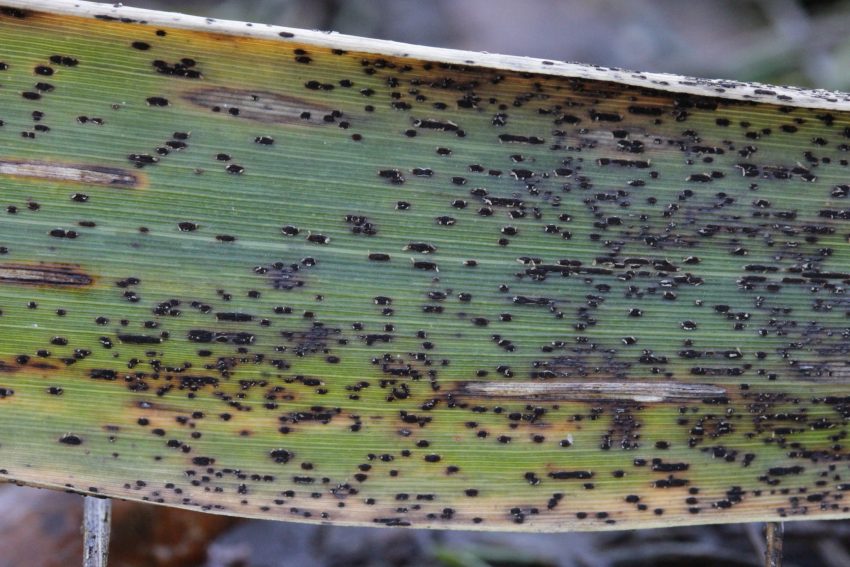As the 2025 corn harvest approaches, farmers across the Midwest and beyond are keeping a wary eye on their fields. What started as a season full of promise, with forecasts pointing to record-breaking yields, now faces threats from a lineup of diseases that could trim those expectations. Southern rust and tar spot are leading the charge, but they’re not alone. While no one wants to see farmers and their crops suffer, these issues might just nudge commodity prices higher, offering a sliver of relief to growers squeezed by low markets. Let’s break down what’s happening out there.
Southern rust, triggered by the fungus Puccinia polysora, thrives in warm, humid conditions, something we’ve seen plenty of this year with temperatures hovering around 80 degrees Fahrenheit and a wet growing season. It shows up as small, orange pustules on leaves, blocking photosynthesis and sapping the plant’s energy. If it hits early enough, it can slash yields by 20 to 40 bushels per acre in severe cases, especially in susceptible hybrids. Reports confirm it’s spreading fast, popping up in at least 21 counties in Kansas by late July, and low levels have been spotted across Iowa since mid-July. In Missouri, it’s been active since June, and agronomists in Iowa note it’s the dominant disease in many fields, potentially knocking off 9 to 12 bushels per acre on average. Farmers are reporting major differences field to field, possibly tied to soil fertility or biology, but the consensus is clear: it’s a top threat that could limit top-end potential.
Tar spot, caused by Phyllachora maydis, is another fungal foe that’s been gaining ground since it first hit the U.S. a few years back. It appears as black, raised spots on leaves, resembling specks of tar, and it loves cool, moist environments. This disease can devastate foliage, leading to premature plant death and yield losses up to 50 bushels per acre in bad outbreaks. Last year, it was the biggest culprit for corn losses, wiping out an estimated 280 million bushels in the northern U.S. In 2025, it’s already confirmed in 13 of the top 18 corn-producing states, with early detections in Nebraska as young as the V6 stage and 35 counties in Iowa reporting infections by late July. It’s expanding westward into places like Kansas and Nebraska, and with varying planting dates complicating scouting, farmers are urged to stay vigilant. Fungicides can help if applied timely, but the disease’s stealthy nature makes it tricky.
Beyond these two, other diseases are adding to the pressure. Gray leaf spot and northern corn leaf blight are active in central Illinois after a wet start to the season, causing leaf lesions that reduce photosynthesis and stalk strength. Fusarium stalk rot and root rots are lurking, potentially leading to lodging and harvest headaches. Bacterial leaf streak and anthracnose are showing up too, especially in corn-on-corn rotations. In Minnesota, southern rust is scattered across the south, while tar spot risk varies by region. Warmer conditions are also boosting pest pressures, with projections suggesting major crops like corn could see 31 percent yield declines at 2 degrees Celsius of warming, with pests not even fully accounted for. There’s even chatter about biological risks, like smuggled fungi targeting cereals, but that’s more speculative for now.
All this comes as forecasters hype up a massive crop. The USDA pegs 2025 production at a record 16.7 billion bushels, with an average yield of 188.8 bushels per acre, up sharply from last year. StoneX isn’t far off, estimating 188.1 bushels per acre for 16.323 billion bushels total. Pro Farmer’s crop tour projects 182.7 bushels per acre and 16.204 billion bushels, but they warn diseases could dent those numbers. Satellite data from Iowa shows healthy vegetation similar to high-yield years like 2024’s 211 bushels per acre, but on-the-ground reports tell a different story. Southern rust and tar spot are hitting after pollination in some spots, which might not crush kernel count but could hurt fill, test weight, and standability. Down corn from weakened stalks would make harvest a nightmare and further trim yields.
What does this mean for those record forecasts? If diseases spread unchecked, we could see actual production fall short, creating tighter supplies. That’s already stirring talk of price volatility; a surplus is baked in, but risks from tar spot and rust could spark upward swings. Corn prices have been in the dumps, with breakevens around $4.73 to $5.02 per bushel in northern Illinois, and futures barely offering profit windows earlier this year. Farmers are feeling the pinch, with income down about 11 percent when adjusted for inflation over two years. But reduced yields might flip the script, pushing prices higher and letting some growers eke out a profit. No one’s rooting for crop losses, but in a market flooded with supply, a bit of scarcity could be the lifeline many need.
Scouting fields, choosing resistant hybrids, and timely fungicide apps are key defenses. As one agronomist put it, there’s much to learn from this year’s variability. With harvest on the horizon, the full impact will soon reveal itself. For now, these diseases remind us that even in a year of abundance, Mother Nature holds the cards.


